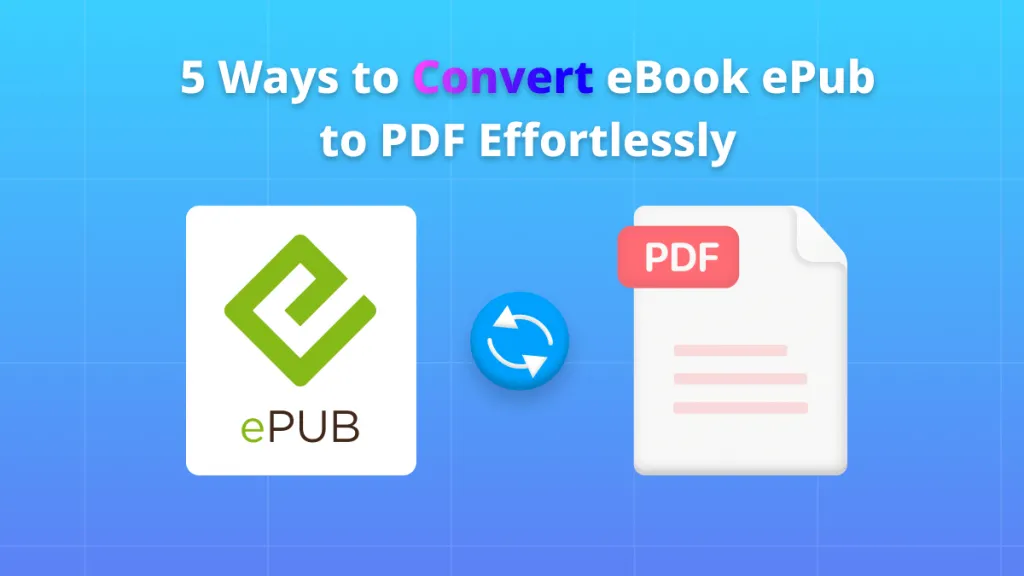PDF maintains data integrity by not allowing anyone to edit them unless people with PDF editors. However, sometimes you need to get the text from a PDF document and edit/use it elsewhere. In such scenarios, converting PDF to text on Windows becomes essential since copying the document. Here, we will show you 3 ways about how to convert PDF to text on Windows.
Part 1. Convert PDF to Text on Windows With UPDF
The best way to convert PDF documents into text on your Windows PC is by using UDPF. UPDF is a premium PDF editing and viewing tool with many features to meet your requirements. Even when it comes to converting text from PDF, UPDF allows 2 conversion modes: simple PDF and scanned PDF conversion.
Windows • macOS • iOS • Android 100% secure
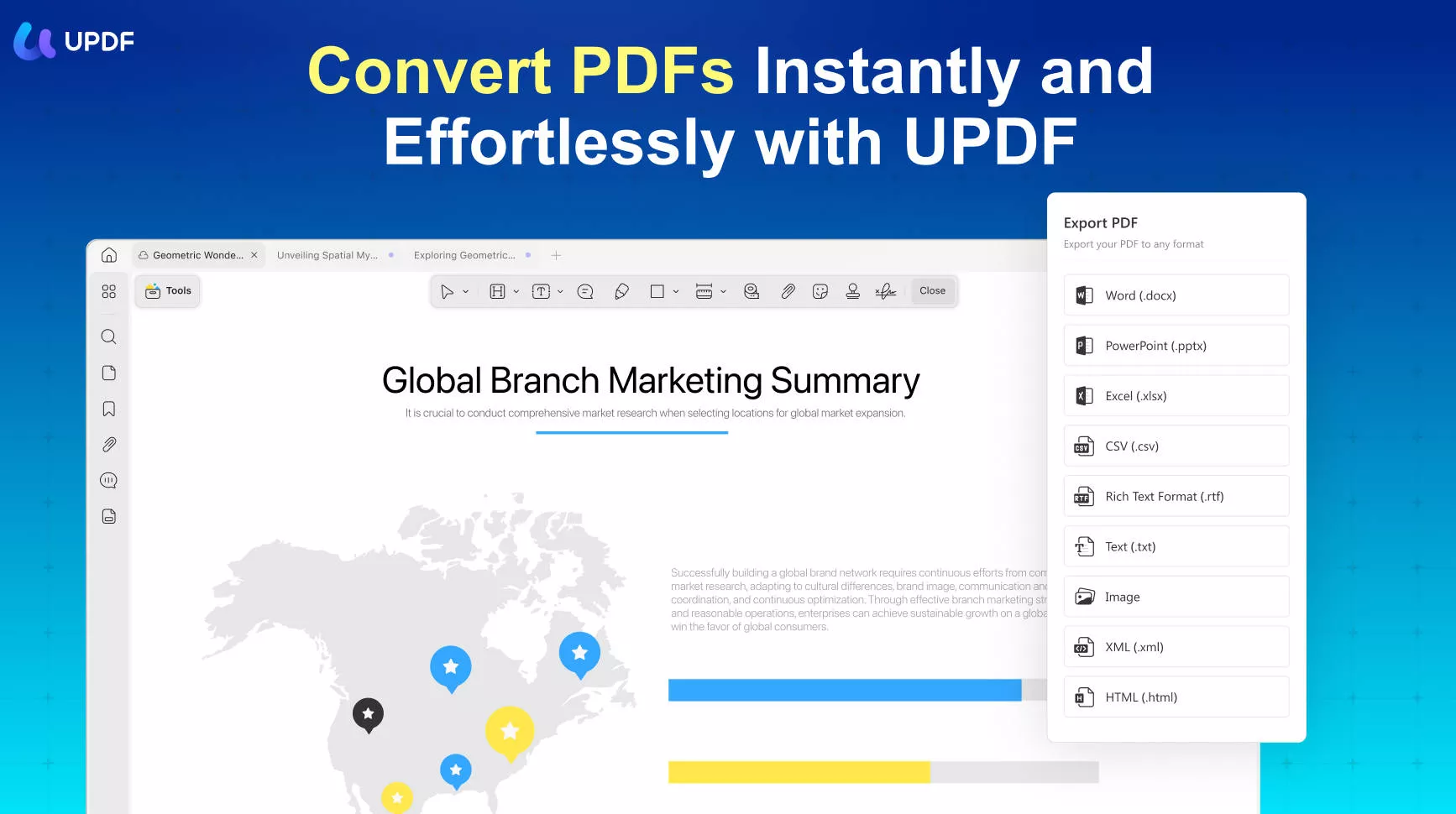
The option to convert scanned PDF to text is lacking in most tools, and UPDF makes the conversion extremely easy. Some additional features that you can get from UPDF include:
- UPDF AI for summarizing, translating, explaining, writing, and asking for anything.
- UPDF Cloud for storing your PDF documents online
- Annotations and comments
- PDF organizing
- Easy PDF sharing in multiple ways
With all these features, your experience of converting text from PDF documents with UPDF will be amazing and below are the details about both ways you can use UPDF for conversion.
1. Convert PDF to Text on Windows
The first way of converting PDF to text with UPDF is basic conversion, and it works on normal PDF file. Since it is the easier conversion, it only takes the following 3 steps:
1. Open PDF file in UPDF
Press the "Windows" key, type "UPDF," and hit enter to open it, or you can locate the desktop shortcut and double-click that to open UPDF on your PC. Now using the "Open File" option, you will get to the browse window where you need to locate the PDF file. Once you find it, click to select and hit the “Open” button below. It will then open that PDF document in UPDF.

2. Export as text
Go to the right panel on the UPDF interface and click the "Tools" button. It will show you multiple options for exporting, like Word, Excel, PowerPoint, Image, etc. To get more options, you need to click on "More". From this "Output Format" list, select "Text". Now another pop-up window will open.
3. Confirm output format
The new pop-up window contains output format settings. In this example, we will continue with the "Text". So, click the "Apply" button to get the browse window. Select the file saving location there and rename the file if you want. Finally, click "Save", and UPDF will save the text file converted from the PDF document on that location.
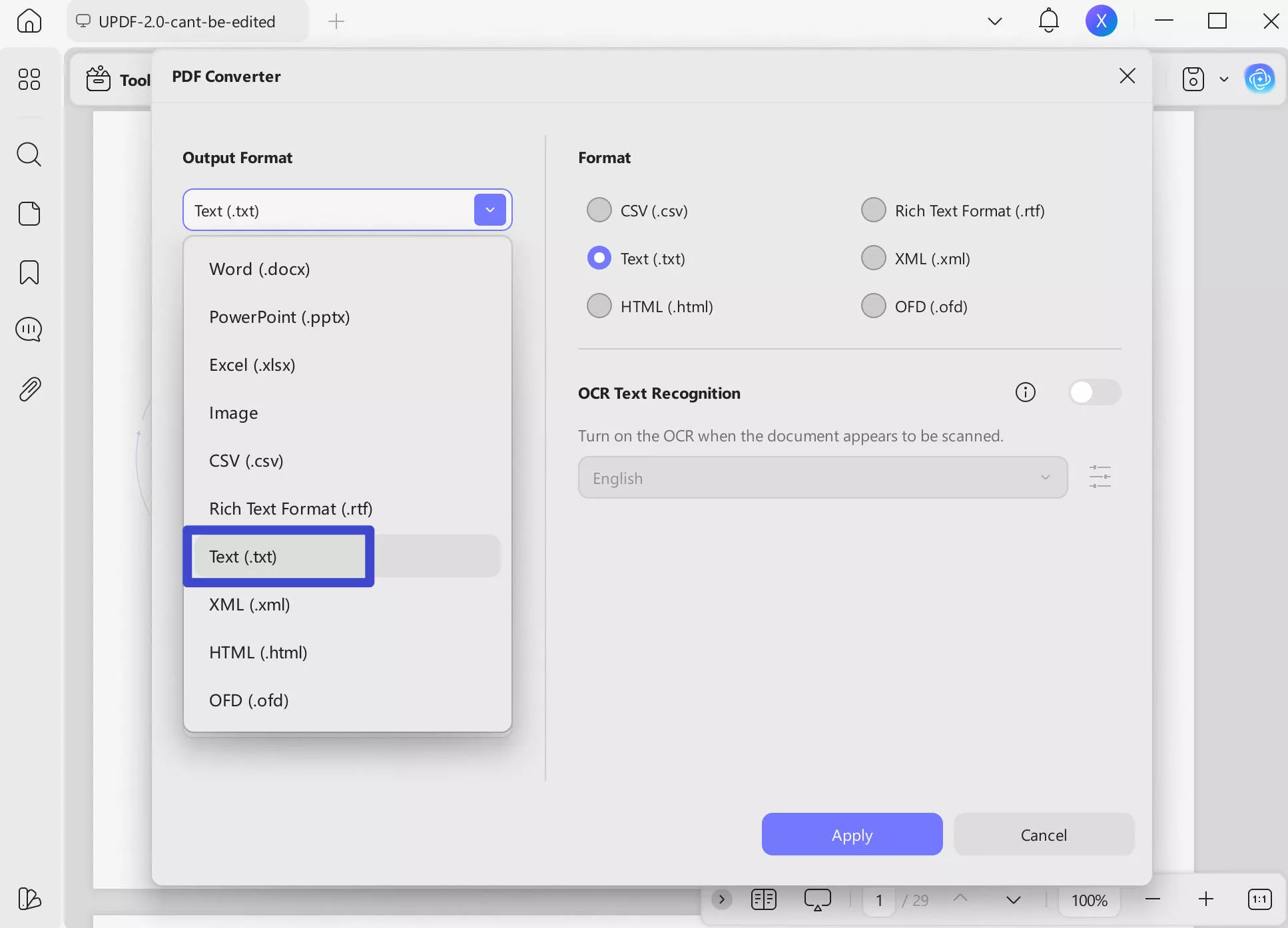
Windows • macOS • iOS • Android 100% secure
2. Convert Scanned PDF to Text on Windows
The next method of using UPDF for PDF-to-text conversion is for scanned PDF documents. It also works on PDF documents that have images of text in them. The procedure and experience are straightforward, with only one additional step, as explained below:
1. Open PDF document in the UPDF app
Once UPDF is open, choose the "Open File" option, leading you to a browse window. Here, you can navigate to the location of the PDF file you wish to open.
After finding the desired PDF, click on it to select it, and then press the "Open" button located below. UPDF will then proceed to open and display the selected PDF document.
2. Perform OCR
Click the "OCR" button in "Tools" in the left-side menu. It will open options to set OCR settings. We will follow the default options in this example and click the "Convert" button. Now in the browse window, select the destination folder for saving the OCR file and click Save. You can also rename that file before saving it so the OCR file will be saved with the new name.
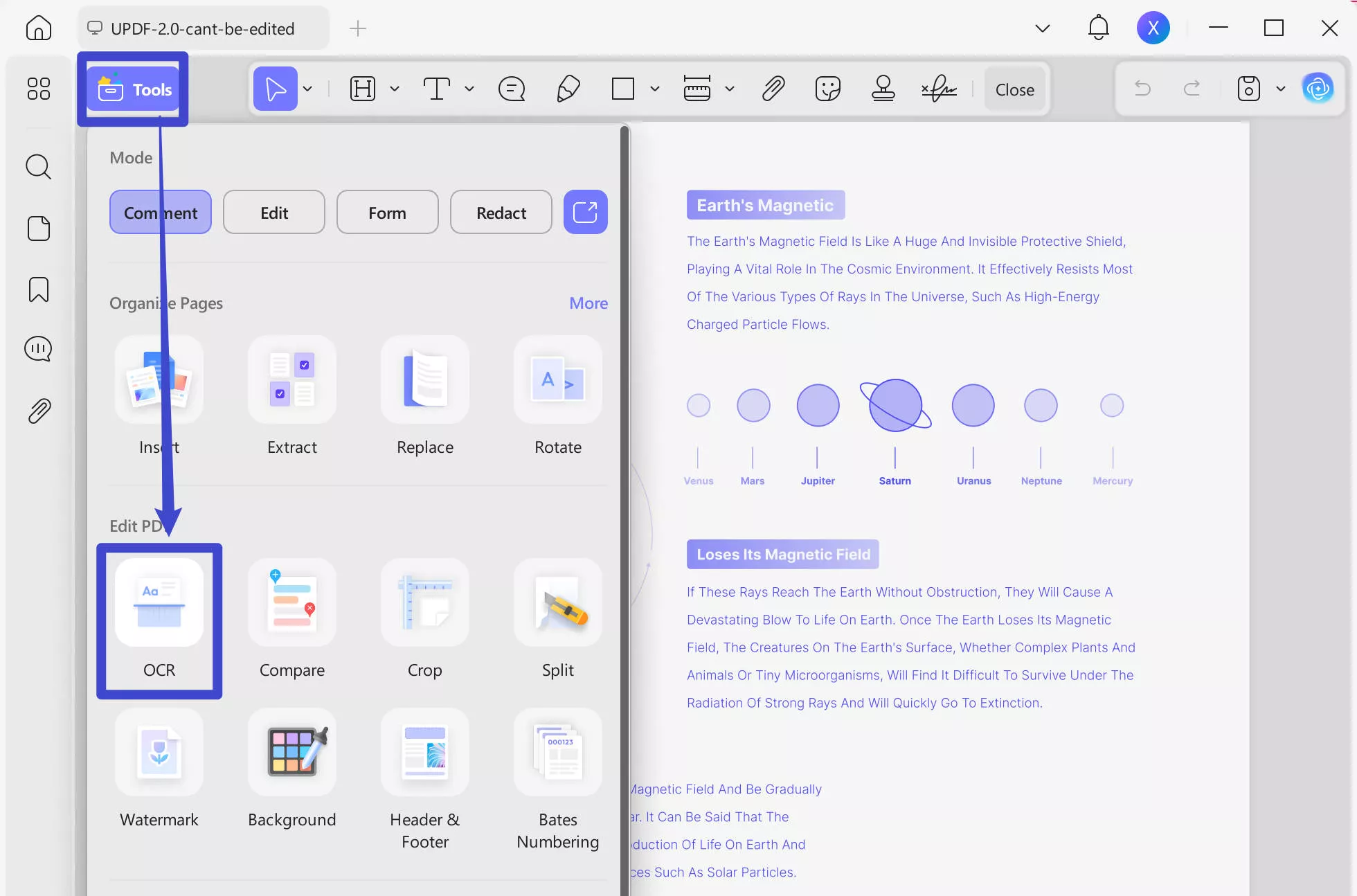
3. Open OCR converted file and export it as text.
Now open a new tab in UPDF and choose "Open File", leading you to a browse window. Here, you can navigate to the location of the OCR PDF file. After finding the PDF, click on it to select it, and then press the "Open" button located below. UPDF will then proceed to open and display the selected PDF document.
From the right panel on the UPDF, click on "Tools" to find "More". Select Text from the "Output Format" option and another pop-up window will open.
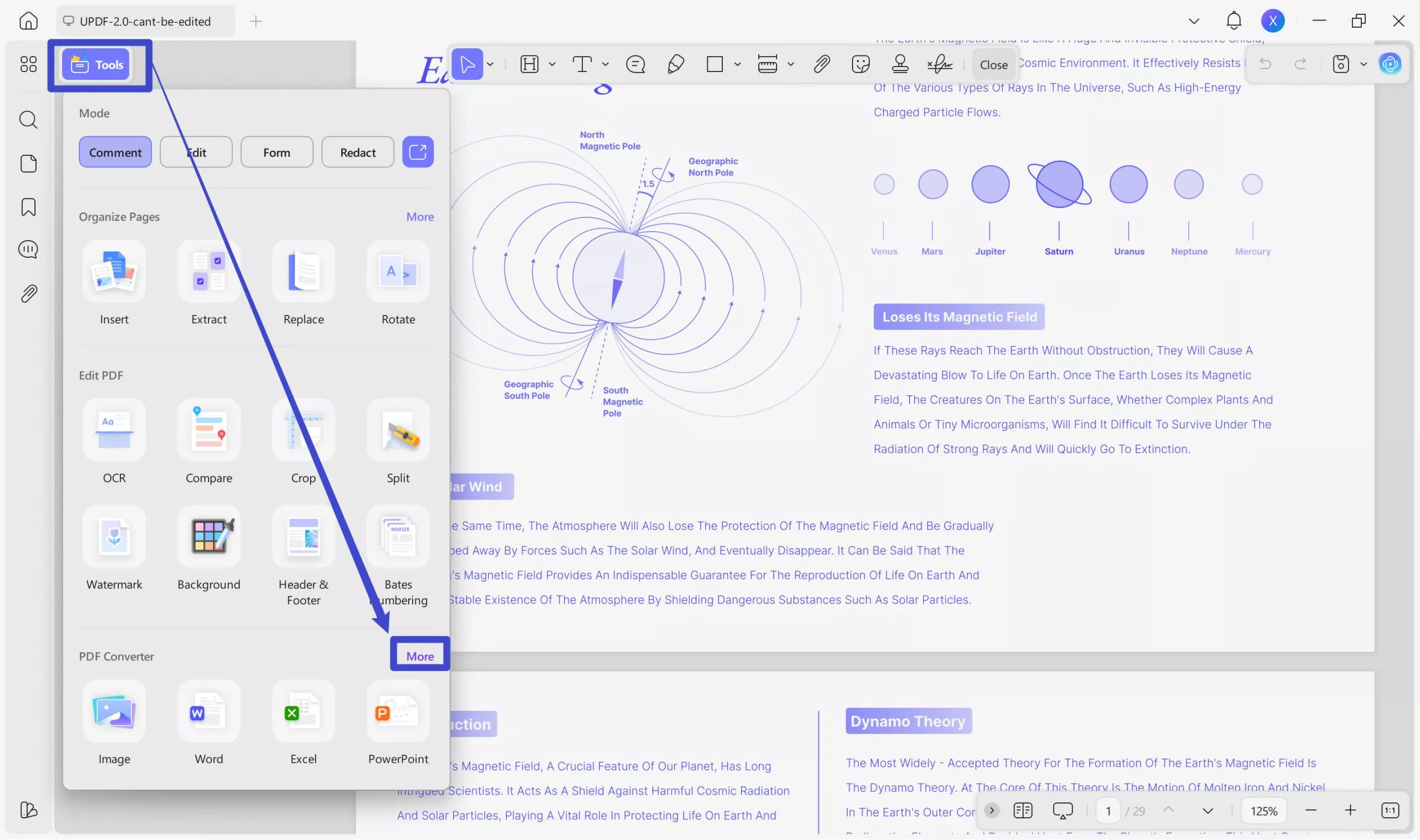
4. Confirm output formatting and save
Click the "Apply" button to get the browse window, select the file saving location, and rename the file if needed. Click "Save," and UPDF will save the text file recently converted from the OCR PDF document. Now you have successfully extracted text from scanned PDF documents.
Windows • macOS • iOS • Android 100% secure
Part 2. Change PDF to Text on Windows with Microsoft Word
Another method to convert PDF to Text is with the help of Microsoft Word. Although it is a tool that works with docx files, it packs capabilities to open a PDF document, and when you do that, the content in PDF gets converted into plain text. However, this method is only a good option if the PDF does not come with formatted content because MS Word cannot maintain the same formatting.
Regardless, the process of using this method is very simple, with the following steps on MS Word only:
1. Use Word to open PDF
Right-click the PDF file icon and click the "Open With" option. If the list shows Word, click it; otherwise, click "Choose another app”. Click Word if it is included in the list; otherwise, click the "More Apps" button at the bottom, and now this extended list will contain Word. Click to select Word and hit “OK." The word may warn you and ask you to confirm the conversion that you need to confirm by pressing "Yes/OK."
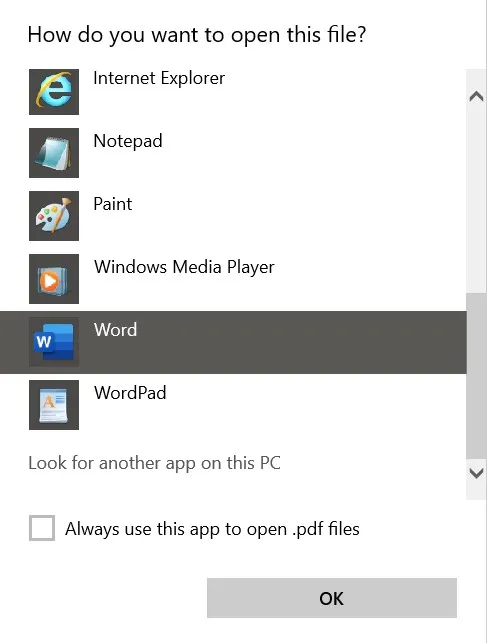
2. Save as Text
Now hit the "Ctrl, Shift, and S" buttons to get the "Save As" screen. Open the "Save as type" dropdown and select the ".txt" file extension. Click "Save," and the text converted from PDF will be saved in a TXT file.
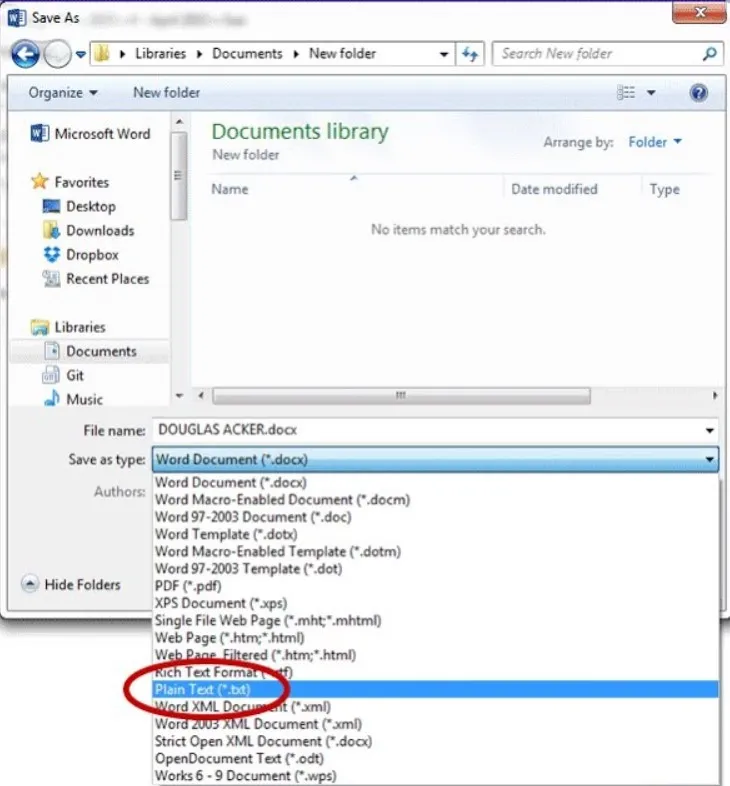
Part 3. Convert PDF to Text Using Command Line on Windows
The last method that we will discuss here is using the Command Line. We use CMD here, but for this method to work, installing the command line tools on your PC is essential since these are not built-in. Luckily, Xpdf brings the "pdftotext” command line utility for free, and we will use it in this method with the following steps:
1. Download the Xpdf command line tool
Go to the XpdfReader website and download the command line tool for Windows PC.
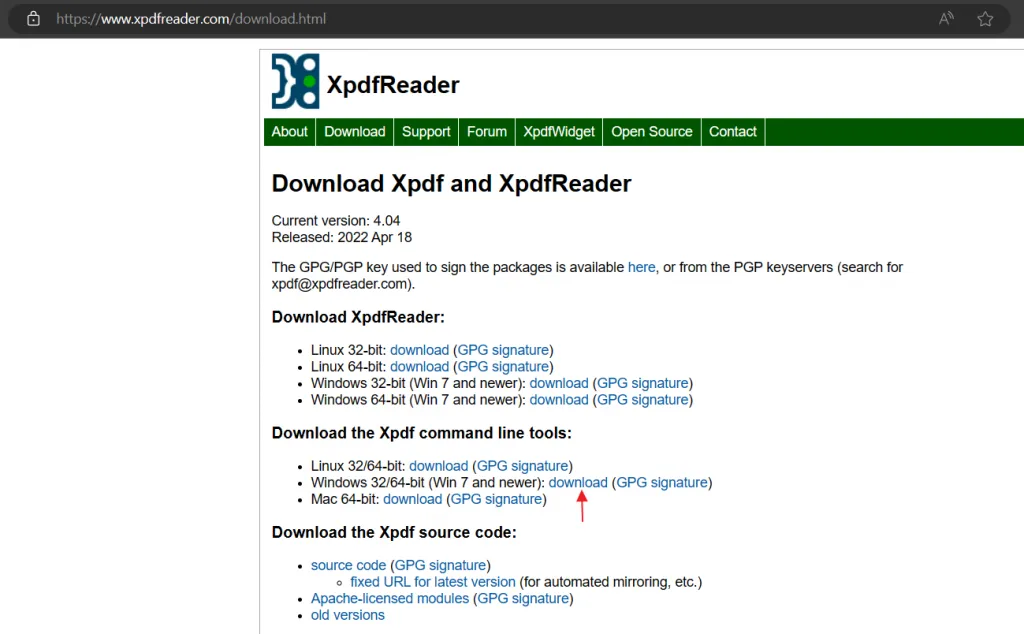
2. Create a folder to extract the tool.
Create a new folder by pressing the "Control, Shift, and N" keys together. Place the downloaded zip file in that folder and the PDF file you want to convert to text. Right-click and select "Extract Here" for the file to extract it.
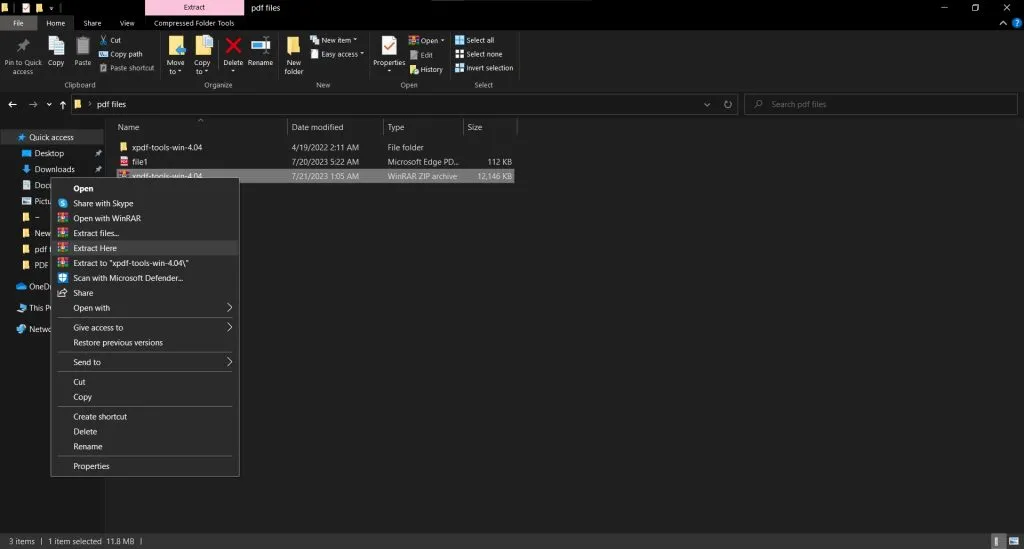
3. Go to advanced system settings.
Press the "Windows and X" keys and select "System". Now go to the right pane and click "Advanced system settings." A pop-up window will appear where you need to click the "Environment Variables" button.
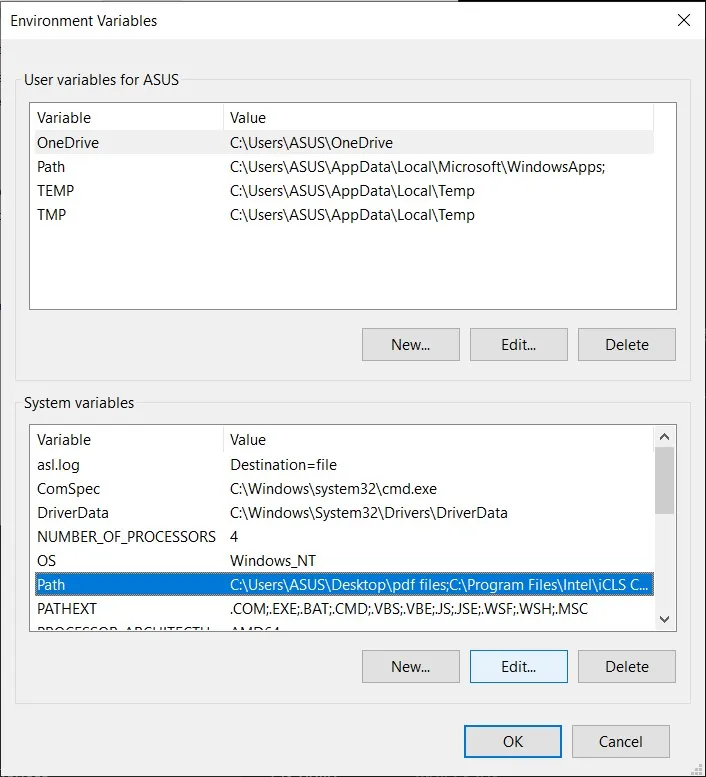
4. Add a new environment variable.
Locate "Path" under "System Variables" and click to select it. It will become blue; now click "Edit. Click "New," "Browse," and locate the folder where you extracted the downloaded file. In that folder, there will be an "pdf-tools-win” folder. Click it and select “bin32” or “bin64”. Click “OK” on all the setting windows to close them.
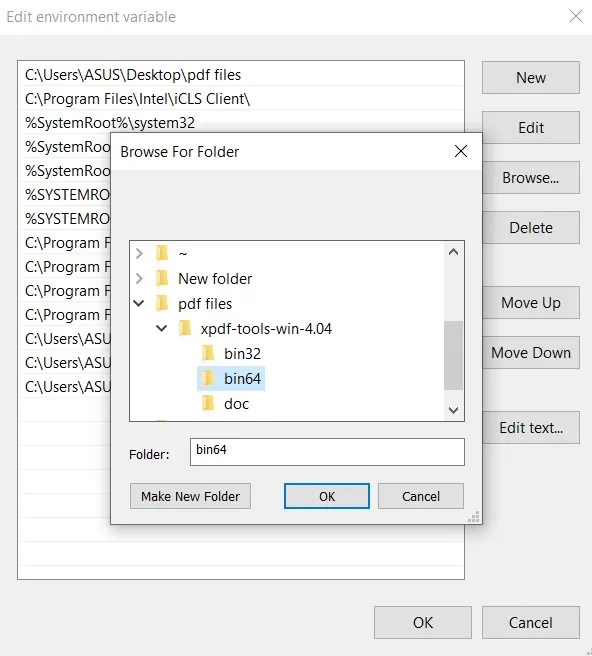
5. Use the command prompt to convert PDF to Text.
Hit the "Windows" key, type CMD, and hit enter to open it. Open the folder that contains the utility tool and PDF document and copy its path from the address bar. For example, in our case, the path is "C:\Users\ASUS\Desktop\pdf files." Type "cd C:\Users\ASUS\Desktop\pdf files" in the command prompt and replace our path with yours. Hit enter. Now type "pdftotext file1.pdf" and hit enter. Replace "file1" with the name of your file. Close the CMD window if it does not show any error message and a new command line starts.
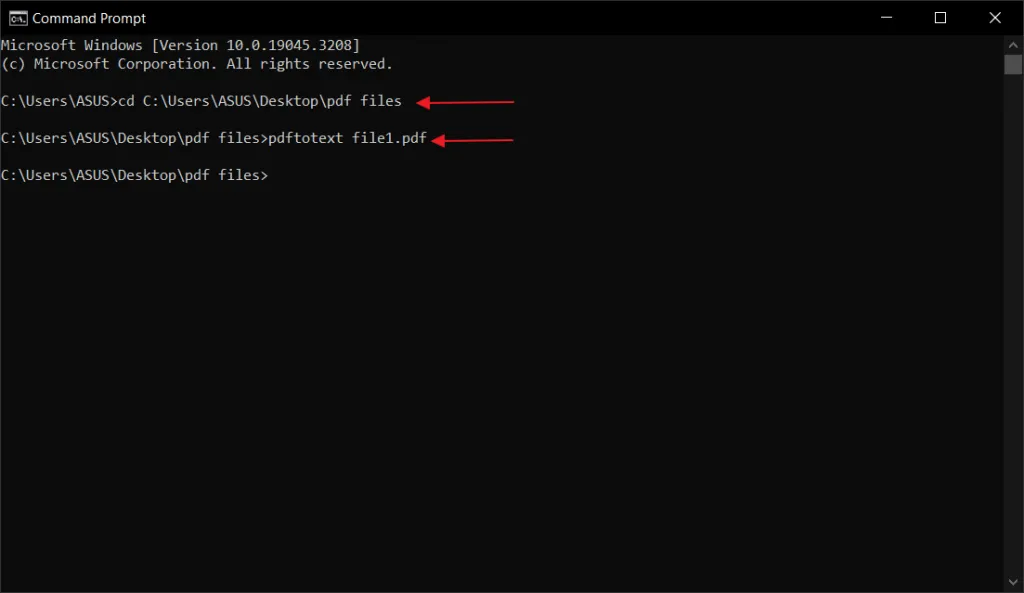
6. Open a new text file to check
Open the folder containing the PDF file, and you will see a TXT file with the same name. You can open both files and verify whether the method has succeeded.
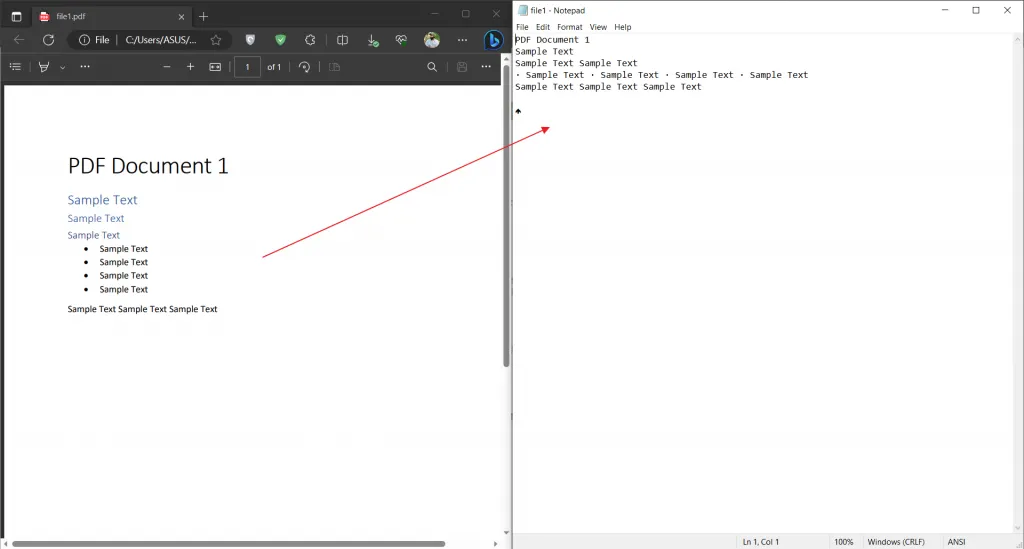
Sum Up
The first thought about converting PDF to text Windows is copying the document. It might be feasible for small documents, but it is inefficient for bigger ones. That’s where the methods we discussed above can be very helpful. Hence, using that text will become very easy for you no matter where you use it.
Most methods discussed above don’t convert text from scanned PDF documents apart from UPDF. So, if you want a tool that always meets your requirements and performs above expectations, then UPDF is the right pick. It comes with additional PDF editing and sharing capabilities to bring a complete package for you.
Windows • macOS • iOS • Android 100% secure
 UPDF
UPDF
 UPDF for Windows
UPDF for Windows UPDF for Mac
UPDF for Mac UPDF for iPhone/iPad
UPDF for iPhone/iPad UPDF for Android
UPDF for Android UPDF AI Online
UPDF AI Online UPDF Sign
UPDF Sign Edit PDF
Edit PDF Annotate PDF
Annotate PDF Create PDF
Create PDF PDF Form
PDF Form Edit links
Edit links Convert PDF
Convert PDF OCR
OCR PDF to Word
PDF to Word PDF to Image
PDF to Image PDF to Excel
PDF to Excel Organize PDF
Organize PDF Merge PDF
Merge PDF Split PDF
Split PDF Crop PDF
Crop PDF Rotate PDF
Rotate PDF Protect PDF
Protect PDF Sign PDF
Sign PDF Redact PDF
Redact PDF Sanitize PDF
Sanitize PDF Remove Security
Remove Security Read PDF
Read PDF UPDF Cloud
UPDF Cloud Compress PDF
Compress PDF Print PDF
Print PDF Batch Process
Batch Process About UPDF AI
About UPDF AI UPDF AI Solutions
UPDF AI Solutions AI User Guide
AI User Guide FAQ about UPDF AI
FAQ about UPDF AI Summarize PDF
Summarize PDF Translate PDF
Translate PDF Chat with PDF
Chat with PDF Chat with AI
Chat with AI Chat with image
Chat with image PDF to Mind Map
PDF to Mind Map Explain PDF
Explain PDF Scholar Research
Scholar Research Paper Search
Paper Search AI Proofreader
AI Proofreader AI Writer
AI Writer AI Homework Helper
AI Homework Helper AI Quiz Generator
AI Quiz Generator AI Math Solver
AI Math Solver PDF to Word
PDF to Word PDF to Excel
PDF to Excel PDF to PowerPoint
PDF to PowerPoint User Guide
User Guide UPDF Tricks
UPDF Tricks FAQs
FAQs UPDF Reviews
UPDF Reviews Download Center
Download Center Blog
Blog Newsroom
Newsroom Tech Spec
Tech Spec Updates
Updates UPDF vs. Adobe Acrobat
UPDF vs. Adobe Acrobat UPDF vs. Foxit
UPDF vs. Foxit UPDF vs. PDF Expert
UPDF vs. PDF Expert



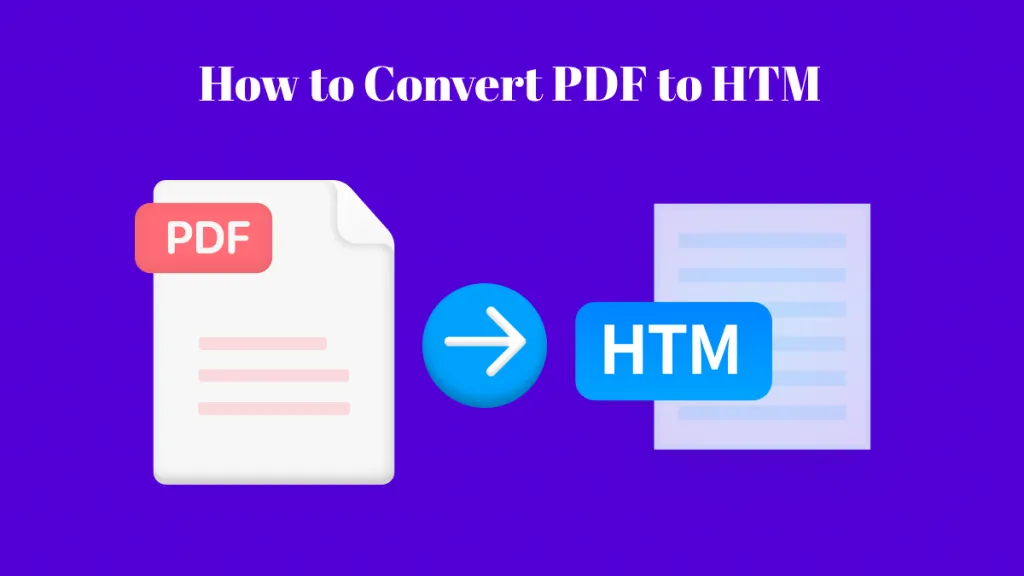
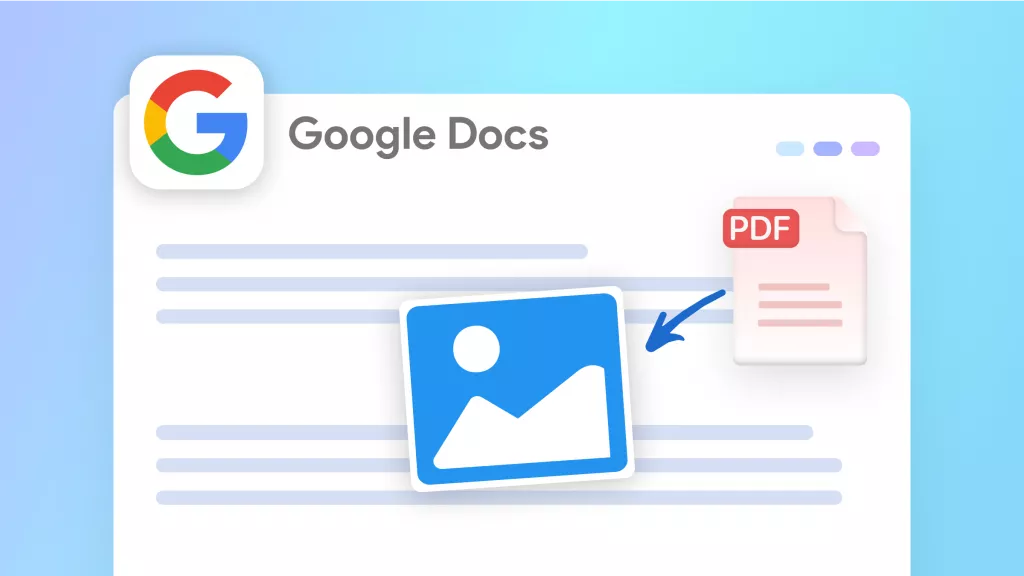

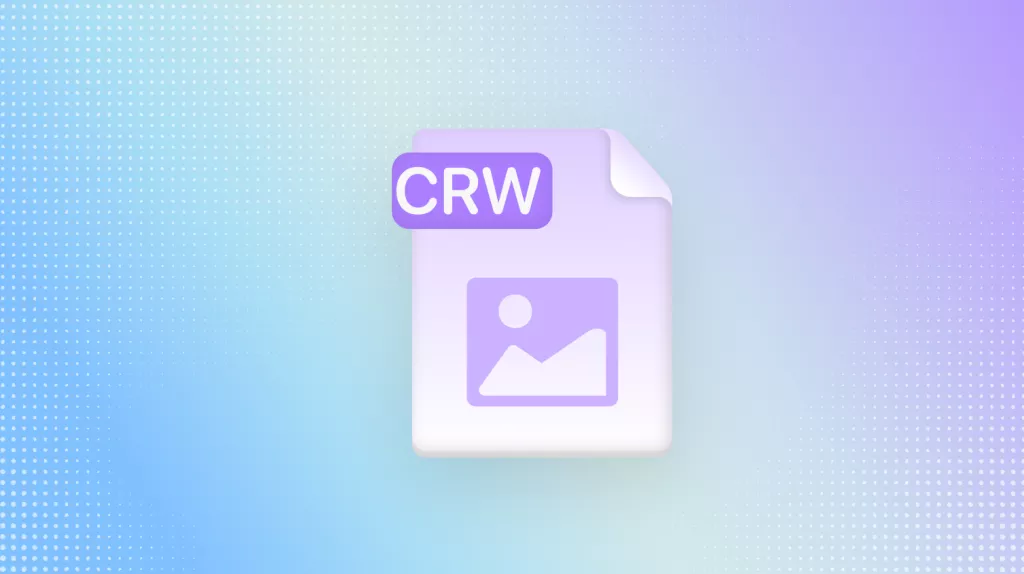

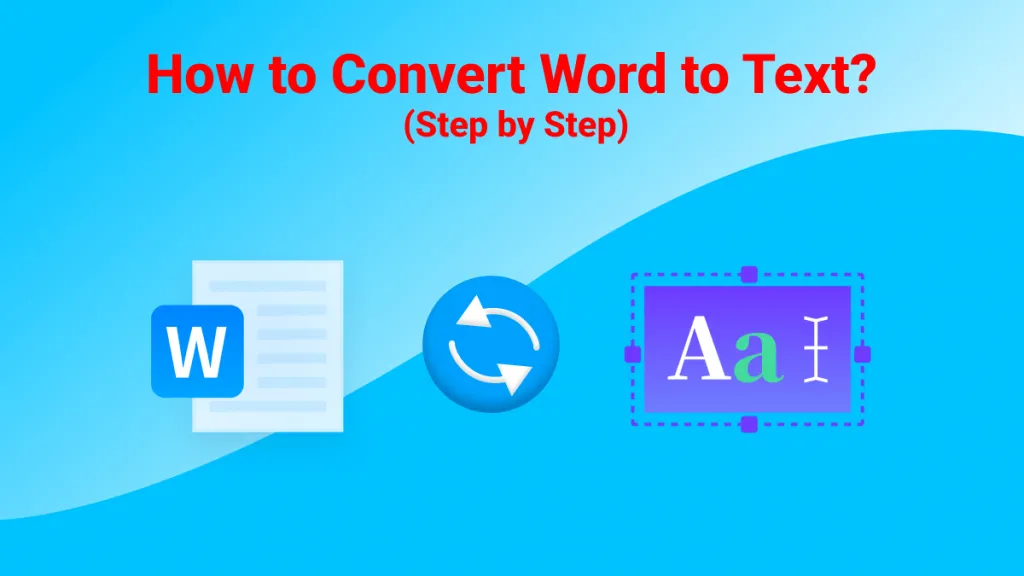
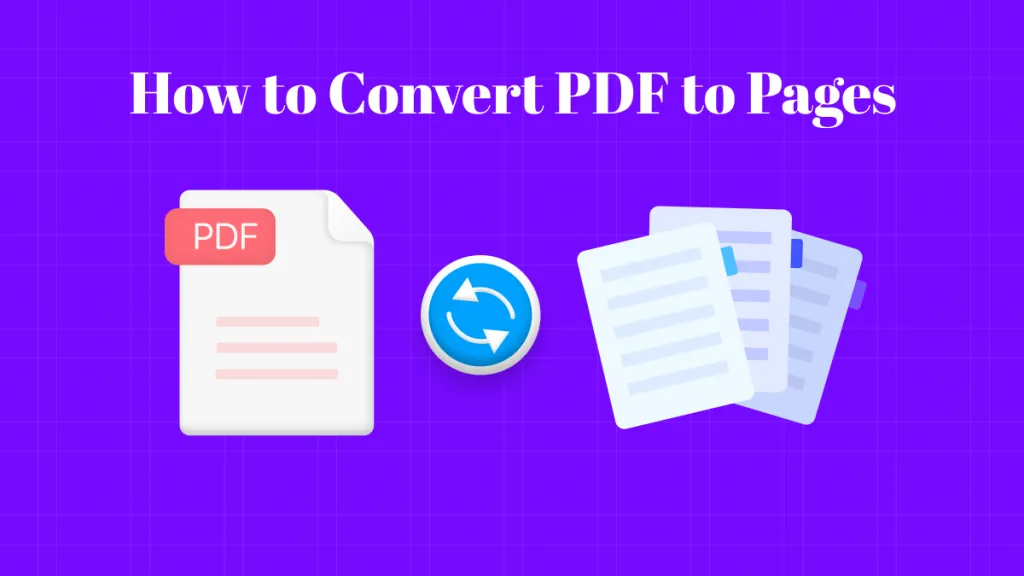
 Lizzy Lozano
Lizzy Lozano 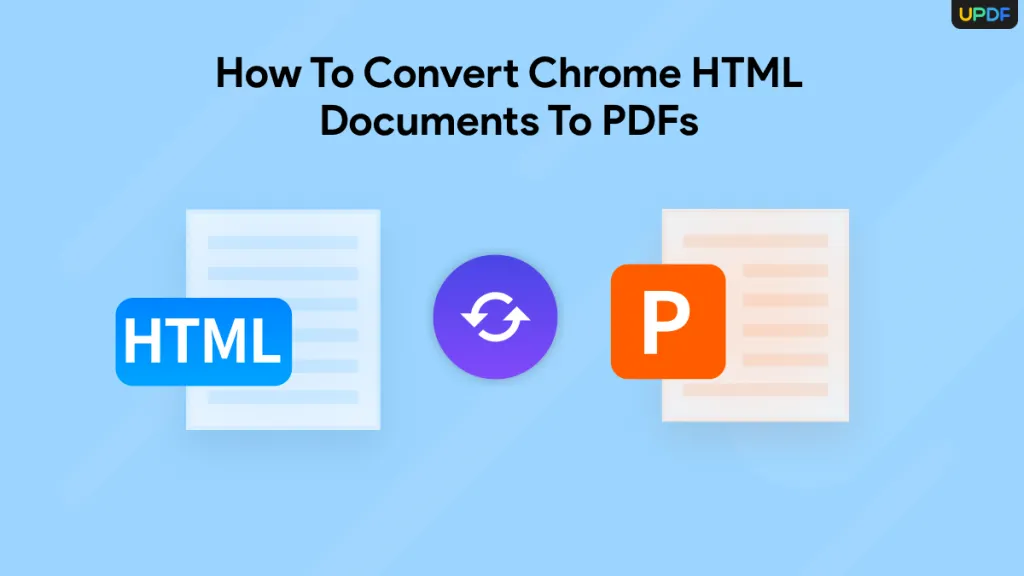
 Enola Miller
Enola Miller 